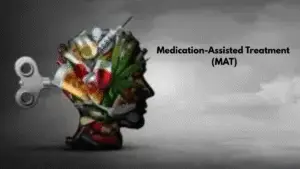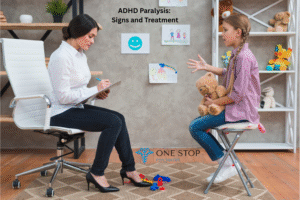What is Medication-Assisted Treatment (MAT)?
Addiction is a chronic brain disease, and people affected by addiction can experience both emotional and behavioral changes. Though there are many ways of treating addiction, the effectiveness of those treatments varies based on the type that’s recommended. Medication-assisted treatment (MAT) is widely accepted as an effective way to manage addiction for some individuals. In this article, we’ll be discussing MAT in general and how it would work to treat certain types of addictions.
What Medications are Used In MAT?
Medication-assisted treatment, or MAT, is a type of treatment for substance abuse disorders that involves the use of medication. The medication is used to help manage withdrawal symptoms and cravings, and it can also help to restore balance in the brain.
MAT can be used to treat a variety of substance abuse disorders, including alcohol dependence, opioid dependence, and methamphetamine dependence. There are a variety of medications that can be used in MAT, and the type of medication that is used will depend on the individual and the severity of their disorder.
Some of the medications that are commonly used in Medication-assisted treatment (MAT) include:
methadone
buprenorphine
naltrexone
Acamprosate
disulfiram
There are three main types of medication that are used in Medication-assisted treatment (MAT): methadone, buprenorphine, and naltrexone. Methadone is a long-acting opioid agonist that is used to treat withdrawal symptoms and cravings. Buprenorphine is a partial opioid agonist that helps to reduce cravings and withdrawal symptoms. Naltrexone is an opioid antagonist that blocks the effects of opioids.
MAT can be an effective treatment for substance abuse disorders, and it can help people to abstain from drug use and live healthier, more productive lives.
Suboxone® (Buprenorphine and Naloxone)
Medication-Assisted Treatment (MAT) is the use of medications, in combination with counseling and behavioral therapies, to provide a “whole-patient” approach to the treatment of substance use disorders. Medications used in MAT are approved by the FDA for the treatment of addiction and work by blocking the euphoric effects of alcohol and other drugs, reducing cravings, and normalizing brain chemistry.
Suboxone® is a medication that contains buprenorphine, a partial opioid agonist, and Naloxone, an opioid antagonist. Buprenorphine prevents the “high” from other opioids by binding to the same receptors in the brain as opioids, but with a much weaker effect.
Naloxone (also known as Narcan®) is used to reverse an overdose of opioids such as heroin and prescription painkillers. Naloxone blocks the “high” from other opioids and reverses the respiratory depression caused by opioids.
Suboxone® is used to treat addiction to heroin and other opiates. It can also be used to ease withdrawal symptoms in people who are trying to quit using opioids. Suboxone® is taken under the tongue or in the cheek and dissolves quickly. It is usually taken once a day, but may be taken more often if needed.
Subutex® (Buprenorphine)
Subutex®, like Suboxone®, is a medication used to treat addiction to heroin and other opiates. Subutex®, however, does not contain Naloxone and therefore will not reverse an overdose
Suboxone® is one such medication used in MAT. It is a combination of buprenorphine and naloxone, and is used to treat opioid dependence. Buprenorphine is a partial agonist at the mu-opioid receptor, which means that it produces some of the same effects as opioids such as heroin or oxycodone, but not to the same degree. This partial agonist effect reduces the risk of abuse and overdose while still providing some relief from withdrawal symptoms. Naloxone is an antagonist at the mu-opioid receptor, which means that it blocks the effects of opioids. It is included in Suboxone® to deter abuse by injection.
Suboxone® is taken orally, usually once daily. It comes in both tablet and film
Sublocade® – (Extended-Release Buprenorphine)
MAT is a safe, effective, and evidence-based treatment for opioid use disorder.
MAT is an evidence-based, medical treatment that can improve the health and social functioning of patients with chronic pain and opioid use disorder. MAT treatment involves using FDA-approved medications, along with counseling and behavioral therapies to provide a “whole-patient” approach to the treatment of substance use disorders.
Sublocade® is the first and only once-monthly subcutaneous injection for adults living with moderate to severe chronic pain associated with OUD who have initiated treatment with a transmucosal buprenorphine-containing product and have been on a stable dose of transmucosal buprenorphine for at least 7 days. Sublocade® is indicated for initiation and maintenance of treatment to reduce illicit opioid use in adult patients when other treatment options are ineffective, not tolerated or provided for continued illicit opioid use.
Sublocade® provides more consistent therapeutic levels than daily dosing with an oral transmucosal buprenorphine product on an as-needed basis, which may result in greater efficacy against illicit opioids and improved clinical outcomes such as reduced craving, reduced withdrawal symptoms, increased retention in outpatient therapy programs, improved social functioning including employment status and decreased criminal activity.
Want to learn more? Visit: One stop Psychiatry
Sublocade is the first and only extended-release buprenorphine injection for the treatment of moderate to severe OUD in adults. It is a once-monthly, subcutaneous injection that provides steady-state concentrations of buprenorphine within 2 to 4 hours after injection. Sublocade has been shown to be safe and effective in clinical trials, with patients demonstrating improvements in abstinence, retention in treatment, and quality of life measures.
Vivitrol® (Monthly Injectable Naltrexone)
If you are struggling with addiction to alcohol or opioids, you may be interested in Vivitrol®. With a convenient monthly injection, this medication can help you stay on track with your recovery. If you’re ready to get started, contact Hillsborough County Addiction Recovery Services today to set up a consultation.
What Is Vivitrol?
Vivitrol is injectable naltrexone that helps keep people with opioid or alcohol addiction away from their substances of abuse. It comes in an intramuscular shot form and is administered once a month by either medical professionals or loved ones who have been trained specifically for this purpose. The monthly injections are administered at the same time each month, so they provide a reminder to stay on track with your sobriety journey. Each injection contains 380 mg of naltrexone hydrochloride.
What Is Naltrexone?
Naltrexone is used as a treatment for both opioid and alcohol addiction because it works to block the effects of these substances when taken as directed and prescribed by a doctor. It was originally developed as part of an oral tablet that was designed only for use against opioid addiction but has since been converted into several other forms including shots, implants and trans
opioid addiction, you are not alone. According to the National Institute on Drug Abuse, more than 2 million Americans suffer from addiction to prescription pain relievers or heroin.1 Medication-assisted treatment (MAT) is one option that can help you on your road to recovery. MAT involves the use of medications, such as buprenorphine or methadone, in combination with counseling and behavioral therapies to provide a “whole-patient” approach to treatment.2
One medication that is often used in MAT is Vivitrol® (naltrexone). Vivitrol is a monthly injectable medication that blocks the effects of opioids.3 It can be used as part of a comprehensive treatment plan for people who are addicted to opioids and are also receiving counseling and other support services.
Vivitrol can be an important tool in your recovery journey. If you are considering this medication, talk to your doctor about whether it is right for you.
If you’re ready to explore whether MAT is right for you, contact us today and take the first step toward a healthier, more empowered future with One Stop Psychiatry.
Call us for free consultation: Ph: (754) 270-6322
Address: 8910 Miramar Pkwy Office 309G, Miramar, FL 33025




